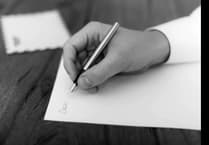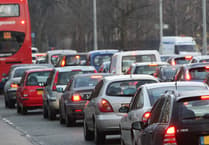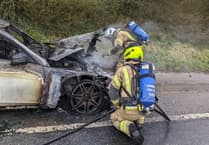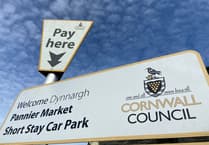When you think of the global behemoth that is the sport of Formula One, the chances are that your mind will be immediately taken to the world’s fastest cars duelling in some of the world’s most glamorous or iconic places.
Whether it’s the jam packed grid of glamour and single-file racing at Monaco, the basilica of bravery of the fearsome Spa-Francorchamps, the dusk delight under the lights of Singapore or celebrities ignoring Martin Brundle in the United States of America, one place your mind won’t immediately associate with Formula One is Cornwall.
After all, today, Cornwall is a place where the biggest World Championship event held is the annual pasty competition. It’s a place where the fastest cars receive a ticket from Devon and Cornwall Police for speeding on the A30 and you’re more likely to see celebrities opening restaurants in Padstow than congregating on the start line just before a race. As for Davidstow, well, chances are you know it for its cheese as the place where Davidstow Cheddar and Cathedral City is made.
But, if we rewind the clock to 1952, things were very much different. If there was an airfield, chances are the fastest cars of the day would pay it a visit and Davidstow Airfield, which had previously played its part in World War II, was one of the many places which were turned into rather crude racetracks.
Although, it wasn’t a circuit where if you crashed, you’d be protected by Armco barriers and assisted by world renowned medical teams but rather, the barriers comprised of bales of hay which were probably later used for a cows’ dinner.
Before the arrival of the Cornwall MRC Formula One races in 1954 and 1955, the circuit first played host to a number of local races, organised by the Cornish Vintage Car Club and the Plymouth Motor Club. Perhaps unsurprisingly given its location adjacent to Bodmin Moor, these races were besieged with Cornwall’s finest rain, although that didn’t stop the racing.
1953 would see the usual races of the local car clubs with the added bonus of Formula Three, across two race meetings, held on the Whitsun Bank Holiday Monday and August 1 of that year. Some of the great names of the day were tempted to Cornwall for the race in August, with Don Parker winning the first of two heats in a Kleft, followed by Stuart Lewis-Evans in a Cooper taking second, and Les Leston in a Leston Special taking the final place on the podium.
Fourth place in the event went to a name familiar to Formula One fans around the world, a young Ken Tyrrell in a Cooper.
Come June 1954, and palpable excitement is building for the motorsport fans in Cornwall and beyond. Having received a permit of ‘National Status’, the usual sports cars and Formula Three were joined by Formula One, Formula Two and Formula Libre, bringing some prestige to the humble North Cornwall Airfield.
This success was set to play a part in Davidstow’s downfall as a motor racing circuit the following year. Two meetings would take place across this year, on June 7 and on the August Bank Holiday of that year, on August 2.
A crowd of approximately 20,000 spectators descended on Davidstow to bear witness to the advertised Formula One event. However, also in attendance was high winds and driving rain, which would prove to be the least challenging of the problems that lay ahead that day for only one Formula One car had turned up. Seven cars took the grid for this race, most of which were Formula Two cars which had participated in the support race prior to this event. John Riseley-Pritchard was crowned the winner in his Connaught after leading from start to flag, followed by Jack Walton, Anthony Brooke and Tom Kyffin.
You would be forgiven for thinking that the dreadful weather and absence of Formula One cars would be the nadir of the challenges faced by the organisers of the race on the day, and you’d be wrong. Worse was to follow later in the day.
Horace Gould, who had retired from the race with a blown engine, was leaving the track in his transporter, a converted double decker bus. As he was leaving, his transporter collided with the circuit’s footbridge, bringing it tumbling down onto the track below and immediately ending the days racing as a result. To this day, it is the only time a bridge has collapsed at a British race circuit.
August 1954, and after the farce of the June event, hopes were high that this Formula One event would be better. Although the footbridge would remain intact this time, it wasn’t to be. This time, no Formula One cars turned up, although the inclement weather did, with fog blanketing the circuit accompanied by a persistent, penetrating drizzle.
While again, this was classified as a Formula One race in the record books, it was anything but. The race itself was a mis-mash of vehicles with the starting grid comprising of everything from Formula Two cars to sports cars. With the weather playing havoc, the race length was also reduced, from a planned 30 laps to 20 laps.
It was a race that wouldn’t just go down in notoriety, but would also go in the record books, for it was the first time that the later-to-be-iconic Lotus marque took the chequered flag in a ‘Formula One’ race. John Coombs finished first in his Lea Francis powered Lotus Mk8. While the Lotus was technically built as a sports car, it was classified as a Formula One car due to its engine capacity meeting the regulations. It would also be the only victory for a Lotus until Sterling Moss won the 1960 Monaco Grand Prix in a Lotus 18.
The rest of the podium that day comprised of Cooper-Bristol cars, with Tom Kyffin, Dick Gibson and Gordon Rolls taking the remaining places, while Rodney Nuckey, who had qualified on pole position for the event failed to finish after retiring with oil pressure issues.
After the disasters of the 1954 race seasons, it was perhaps understandable that the organisers of the Davidstow events had decided that 1955 was to be the last time races would be organised on the airfield with one final event set to take place on Whit Monday, May 30. In a case of third time lucky and ending on a high note, there was welcome news for the organisers – actual Formula One cars turned up!
The eagerly anticipated Peter Collins was not to be one of them, however. Although he was scheduled to take part in two different races at Davidstow in an Aston Martin DB3S and a Formula One Maserati 250F, three days before the event he withdrew after learning he was also entered into a meeting at the Crystal Palace race circuit. Nonetheless, Cornwall wasn’t to be denied this time, with the striking Connaught B3 driven by Leslie Marr taking the starring role at the event with future F1 team boss Ken Tyrrell also in attendance.
However, that would be as far as it would go for Tyrrell. Upon learning his opposition would include not only the Connaught but also the Tom Kyffin piloted Bristol engined Cooper, he decided he wouldn’t take part in the race after all. Joining him on the side line would be Tony Ralt in the Connaught B4, which was not ready in time for the race and Tony Crook, who sat out the race while Dick Gibson drove his Cooper-Bristol to fourth place.
The very last event which took place that day at Davidstow would be a Formula Libre race, an event for all different types of cars. Leslie Marr snatched the outright lap record at this event at a speed of just under 90mph in his Connaught with a time of 1 minute 14 seconds.
After the Formula Libre race, racing at Davidstow Airfield was no more. If 1954 was the whimper, the final event of 1955 was the circuit going out with a bang, finally delivering the racing it had always anticipated.
While Davidstow Airfield these days is a flourishing microlight and ultralight flying school as well as home to the Cornwall At War museum, the remains of the track which in its short motorsport history delivered entertainment and notoriety in equal measure can still be made out.
The racing might be a long distant footnote of 70 years ago with little remaining of it ever happening, but Cornwall’s brief dalliance with motorsport lives long in the books of history.




